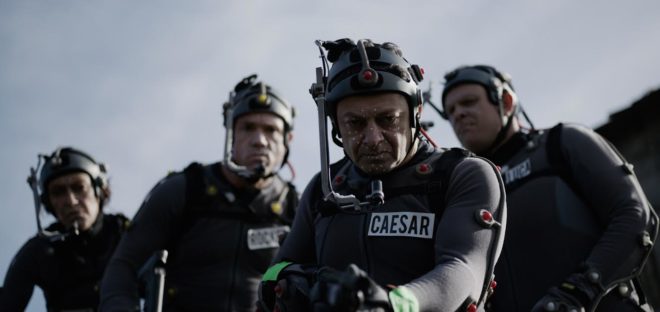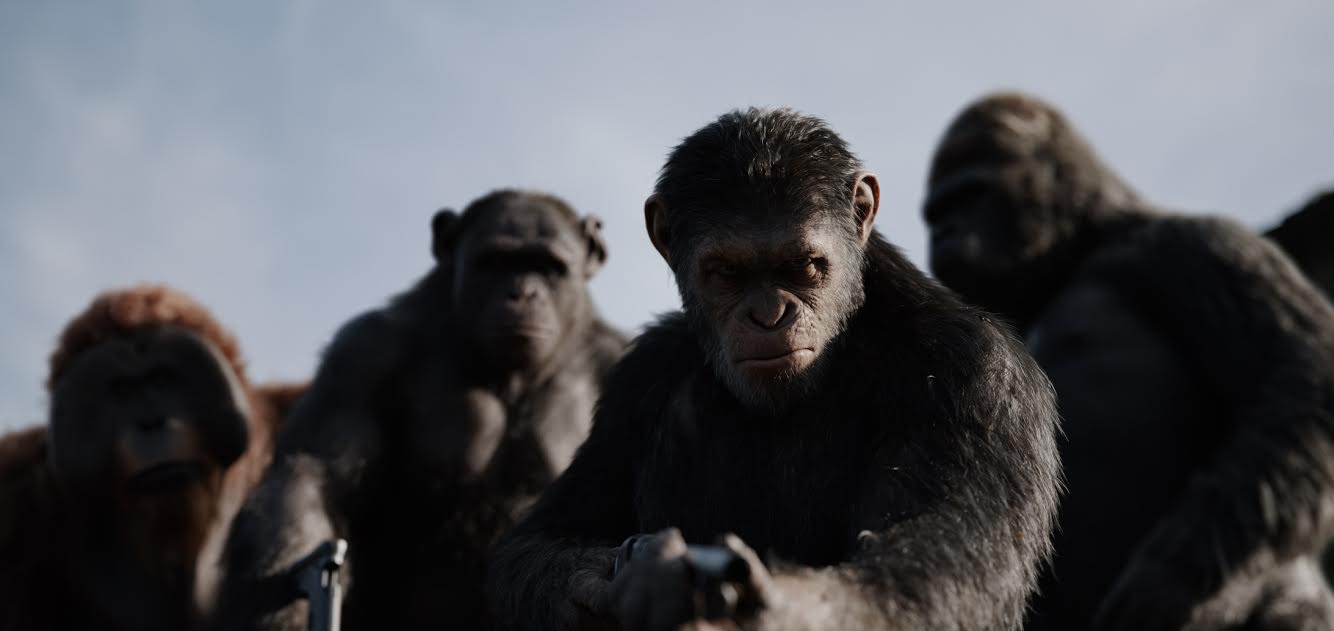

In “War for the Planet of the Apes,” the third chapter of the critically acclaimed reboot series, Caesar (Andy Serkis) wrestles with his darker instincts and begins his own mythic quest to avenge his species after the apes suffered unimaginable losses.
Now, Caesar is left the task to lead the apes to freedom. In a time when empathy and compassion have nearly vanished both in the world and his heart, he searches for the grit, sense of fellowship and striving vision to lead the apes toward a future of hope.
Directed by Matt Reeves, the film pushes the series into new realms of legend-building as it explores the values that forge a civilization.
The visual effects team particularly focused on creating highly realistic interactions between the apes and their environments in the highly thrilling epic action film.
Visual effects supervisor Dan Lemmon explains that performance capture technology has evolved, much like the apes, since shooting “Rise of the Planet of the Apes.”
Real-time facial animation tools now allow artists to execute complex and precise facial animation decisions in the moment, allowing them to recreate any expression and honor the fidelity of the the actor’s performance.
Apart from motion capture, “War for the Planet of the Apes” also introduces new technological concepts. A new organic forest growth software cleverly emulates nature’s own growth patterns, allowing trees to adapt to the plant life surrounding them and even makes changes to shape and color caused by aging over time.
Likewise, the fur technology used in “War for the Planet of the Apes” surpasses all used previously, bringing new levels of complexity to how digital fur behaves and interacts with the world.–CONTRIBUTED
Opening July 12, “War for the Planet of the Apes” is from 20th Century Fox and distributed by Warner Bros.














































